Force F is graduallly increased from zero .Determine whether the block will first slide or lift up?
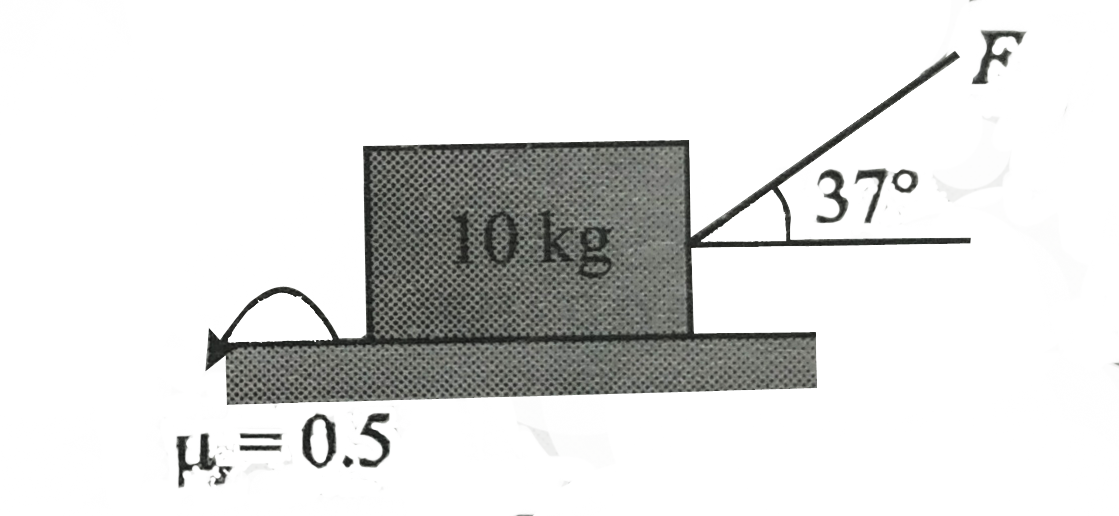
Slide
Lift
Cannot be determined
None of the above
The correct Answer is:A
There is minimum magnitude of force required both in horizontal and verticle direction either to side ao lift up the block will first slide or lift up will depend apon which miximum magnitude of force is lesser
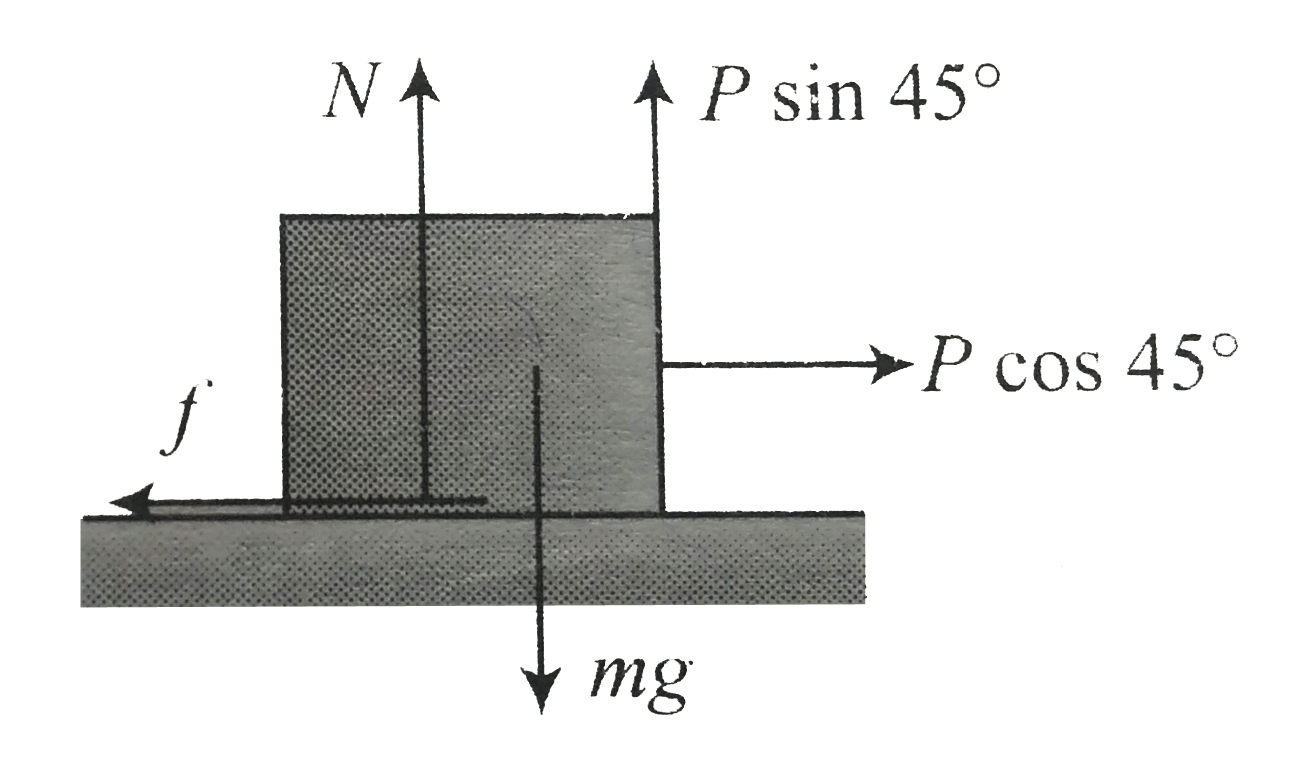
For verticle to start litting up
Fsin37∘+N≥Mg
N becomes zero just lifting condition
F≥Mgsin37∘
Flift≥10g3/5orFlift≥5003N
For horizontal direction to starrt sliding
Fcos37∘≥μsN
Fcos37∘>0.5[10g−Fsin37∘]
(∵N=10g−Fsin37∘)
Hence Fslide>50cos37∘+0.5sin37∘
Fslide>50011N
Flift>5003⇒Fslide<Flift
Topper's Solved these Questions
- NEWTON'S LAWS OF MOTION 2BOOK - CENGAGE PHYSICSCHAPTER - NEWTON'S LAWS OF MOTION 2EXERCISE - Solved Examples
12 Videos
- NEWTON'S LAWS OF MOTION 2BOOK - CENGAGE PHYSICSCHAPTER - NEWTON'S LAWS OF MOTION 2EXERCISE - Exercise 7.1
25 Videos
- NEWTON'S LAWS OF MOTION 1BOOK - CENGAGE PHYSICSCHAPTER - NEWTON'S LAWS OF MOTION 1EXERCISE - Integer
5 Videos
- PROPERTIES OF SOLIDS AND FLUIDSBOOK - CENGAGE PHYSICSCHAPTER - PROPERTIES OF SOLIDS AND FLUIDSEXERCISE - INTEGER_TYPE
2 Videos
Similar Questions
A block of mass m placed on an incline just begins to slide when inclination of the incline is made θ0=45∘. With inclination equal to θ=30∘, the block is placed on the incline. A horizontal force (F) parallel to the surface of the incline is applied to the block. The force F is gradually increased from zero. At what angle a to the force F will the block first begin to slide?
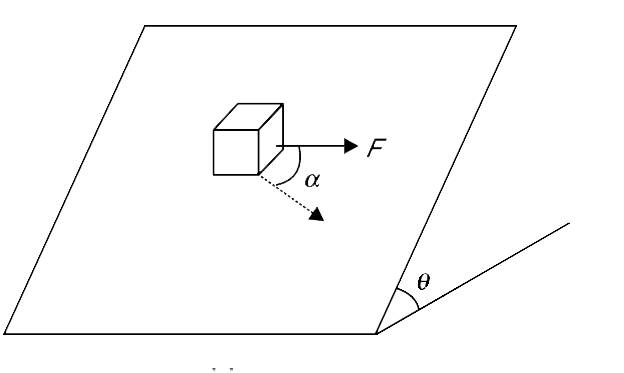
View SolutionIn Fig force F is gradually increased from zero Draw the graph between applied force F and tension T is the string . The coefficient of string friction between the block and the ground is μs
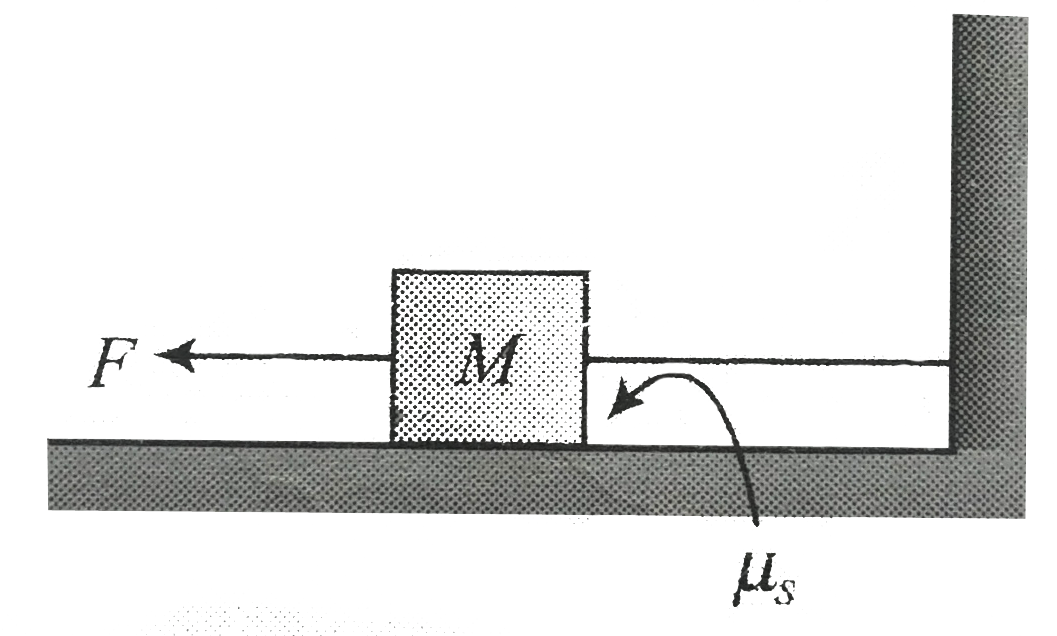
View Solution
Knowledge Check
A block is being pulled by a force F on a long frictionless level floor. Magnitude of the force is gradually increases from zero until the block lifts off the floor. Immediately before the block leaves the floor, its acceleration is
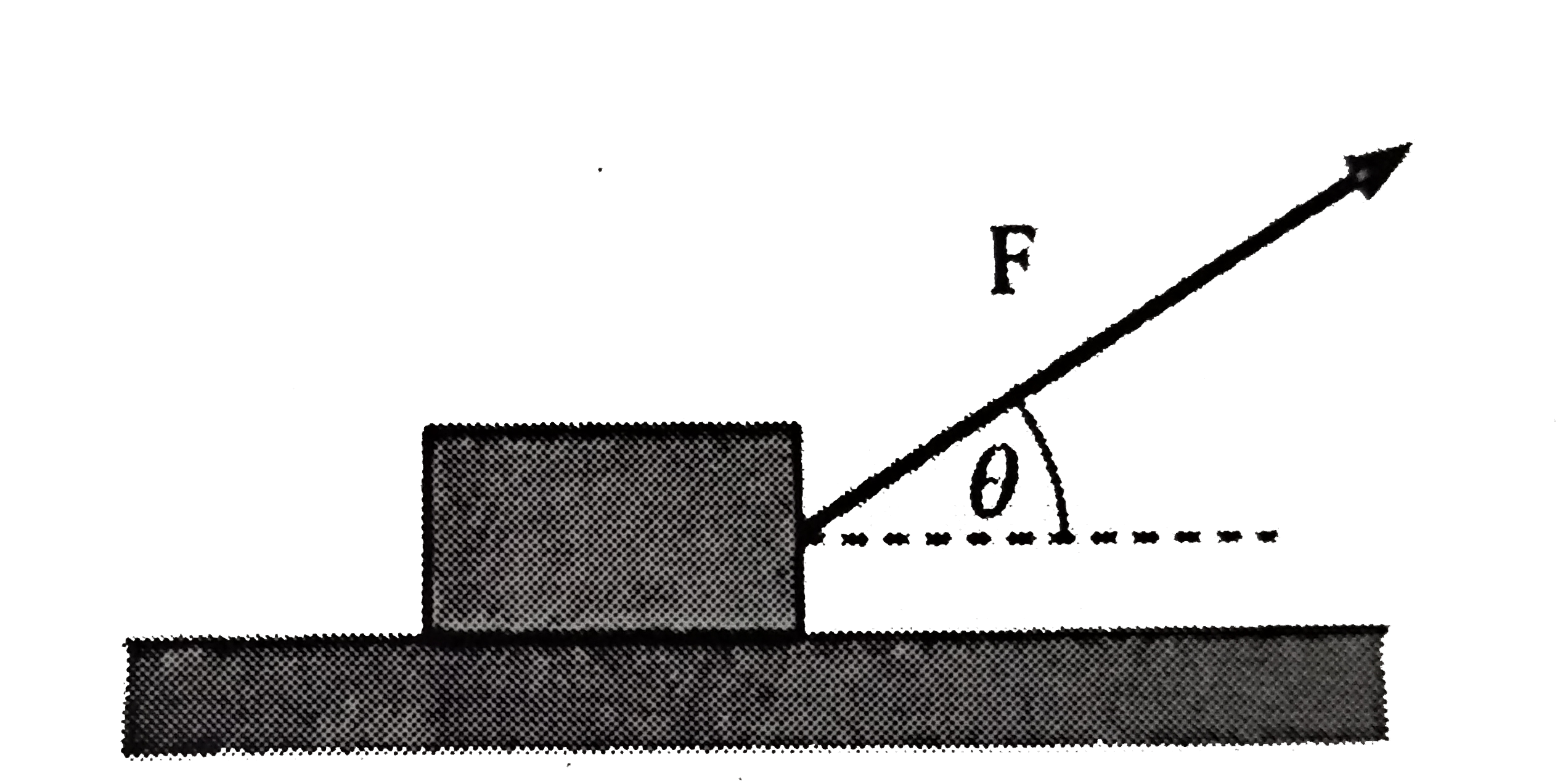 AgcosθBgcotθCgsinθDgtanθ
AgcosθBgcotθCgsinθDgtanθ
A block A (5kg) rests over another block B (3kg) placed over a smooth horizontal surface. There is friction between A and B. A horizontal force F1 gradually increasing from zero to a maximum is spplied to A so that the blocks move together without relative motion. Instead of this wanother horizontal force F2, gradually increasing from zero to a maximum is spplied to B so that the blocks move together without relative motion. ThenAF1(max)==f2(max)BF1(max)>F2(max)CF1(max)<F2(max)DF1(max):F2(max)=5:3
A vertical spring supports a block in equilibrium. The spring is designed to break when extension in it crosses a limit. There is a light thread attached to the block as shown. The thread is pulled down with a force F which gradually increases from zero. The spring breaks when the force becomes F0. Instead of gradually increasing the force, if the thread were pulled by applying a constant force, for what minimum value of the constant force the spring will break?

View SolutionIf force F is gradually increased from zero to 50N , tehn (a) find the minimum contact force, (b) find the maximum value of angle of friction when F=30N , (d) find the angle of friction when the block is moving with constant velocity and ( e) sketch a graph between friction and applied force.
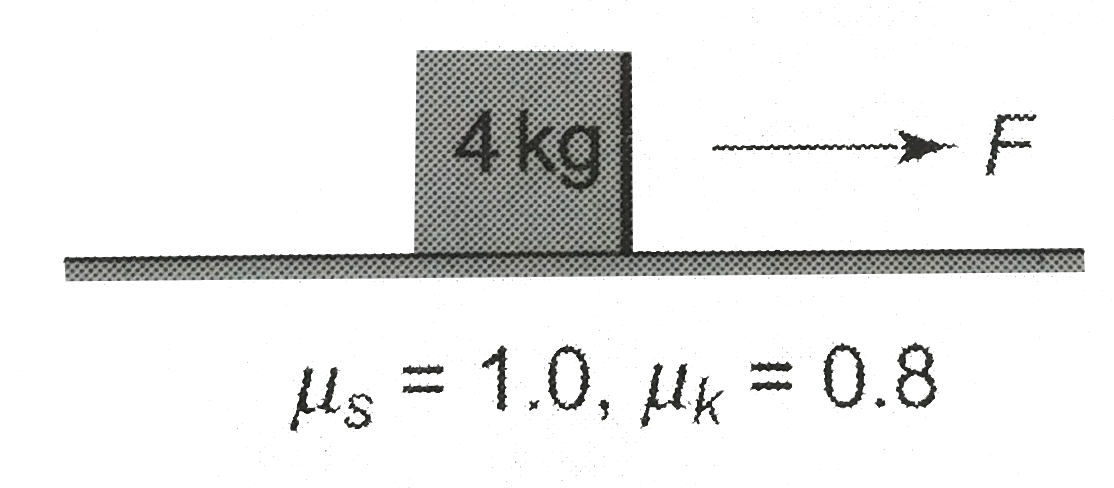
View SolutionIn the figure shown, horizontal force F1 is applied on a block but the block does not slide. Then as the magnitude of vertical force F2 is increased from zero the block begins to slide, the correct statement is
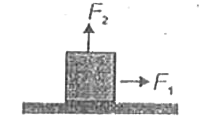
View SolutionA block of mas M is resting on an inclined plane as shown in the figure. The inclination of the plane to the horizontal is gradually increased. It is found that when the angle of inclination is θ the block just begins to slide down the plane. What is the minimum force F applied parallel to the plane that would just make the block move up the plane ?
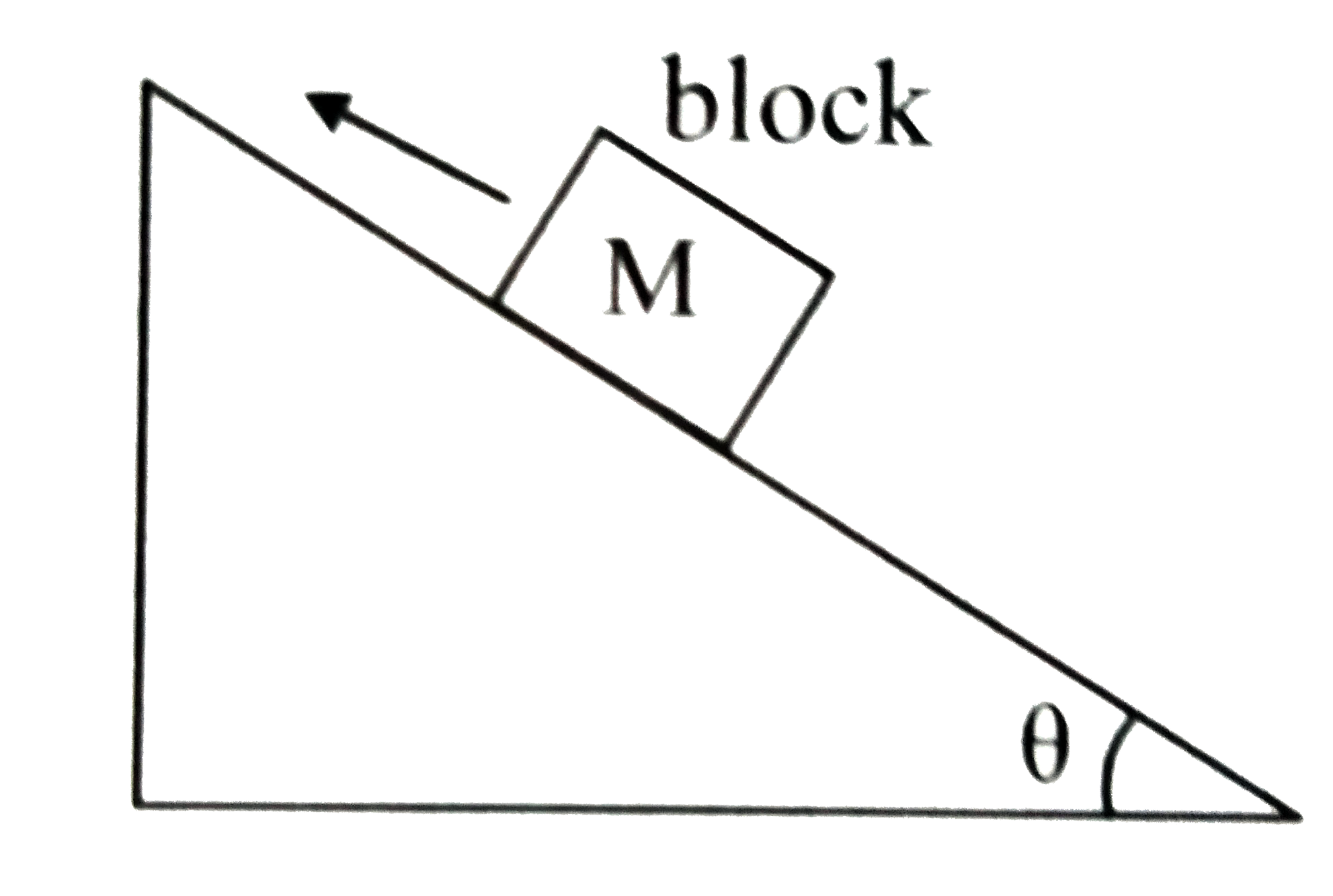
View SolutionThe force magnitude F is slowly increased. What is its value just before the block is lifted (completely) off the floor ?
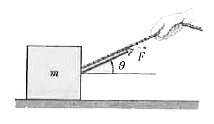
View SolutionA block of mas M is resting on an inclined plane as shown in the figure. The inclination of the plane to the horizontal is gradually increased. It is found that when the angle of inclination is θ the block just begins to slide down the plane. What is the minimum force F applied parallel to the plane that would just make the block move up the plane ?

View Solution
